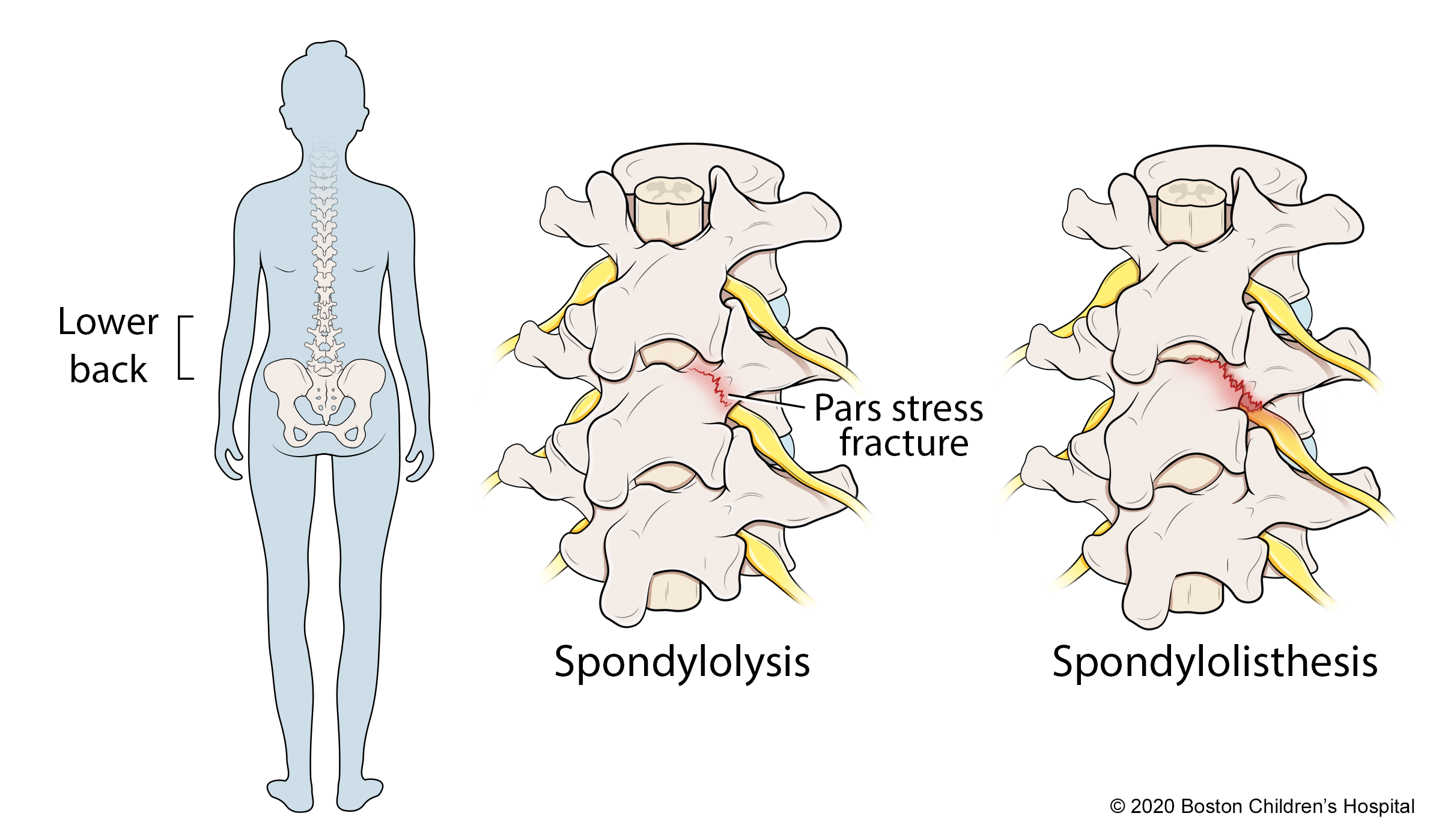Spondylolysis and Spondylolisthesis | Diagnosis & Treatments
How are spondylolysis and spondylolisthesis diagnosed?
The first step in diagnosing spondylolysis or spondylolisthesis is a physical exam. Your child’s doctor may order x-rays to look for a fracture. But because some stress fractures do not show up on x-rays, your child’s doctor may also order one or more of the following tests:
Computerized tomography scan (also called a CT or CAT scan) is an imaging procedure that uses a combination of x-rays and computer technology to produce cross-sectional images of the spine. CT scans are more detailed than general x-rays.
A bone scan is an imaging technique that uses a special dye that circulates through the bloodstream to help clinicians visualize bone metabolism and cell activity. If a stress fracture appears “hot” on the scan, it suggests that the injury has happened recently.
Magnetic resonance imaging (MRI) is an imaging procedure that uses a combination of large magnets, radiofrequencies, and a computer to produce detailed images of the organs and structures of the body. MRIs are particularly helpful to determine if a fracture is old or new.
What are the treatment options for spondylolysis and spondylolisthesis?
Non-surgical treatment
The primary treatment for spondylolysis and mild-to-moderate spondylolisthesis is time off from sports and other activities. This gives your child’s spine time to heal.
In addition to rest, your child's doctor may recommend physical therapy and bracing.
- Physical therapy focuses on stretching the hamstrings in the backs of the legs, strengthening the core muscles that support the spine, and increasing mobility.
- Bracing works by holding the spine in an upright position. If your child is in a lot of pain when they lean backward, they may need to wear a back brace for as long as four months.
- In some cases, doctors recommend bone growth stimulation. A bone growth stimulator is a device that delivers weak electrical currents to the area around a fracture that has not healed. This can promote the growth of new bone. The device may be worn next to the skin or implanted under the skin.
Surgical treatment
Spinal fusion surgery is usually only recommended for children with severe spondylolisthesis whose vertebra has slipped far out of alignment, or when the slippage continues to progress despite other treatments. In rare cases, surgery is the best option for children with spondylolysis if they are still in pain after non-surgical treatment.
During spinal fusion surgery, a surgeon realigns the vertebrae and places small chips of bone (bone graft) around the injured area. They may also stabilize the spine with metal rods and screws to hold the vertebrae in place as the bones fuse. Over time, this section of the spine will become solid bone in a process similar to the way other bones in the body heal if they are broken.
What is the long-term outlook for spondylolysis and spondylolisthesis?
Children and adolescents with spondylolysis and mild or moderate spondylolisthesis usually heal in about three to four months with rest, bracing, and physical therapy. Children who have spinal fusion surgery for severe spondylolisthesis typically heal in about six months to a year.
Most children who follow the activity restrictions and physical therapy program prescribed by their doctor can return to regular activity once their spine has healed. If your child is at risk of re-injury, their doctor may recommend that they stop playing certain sports.


